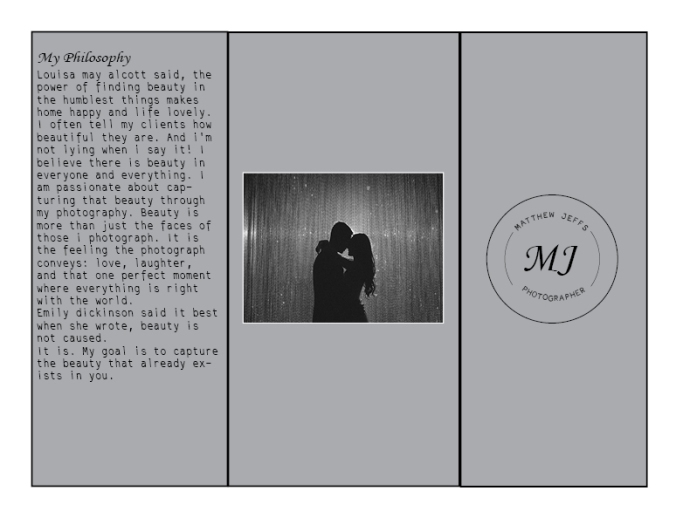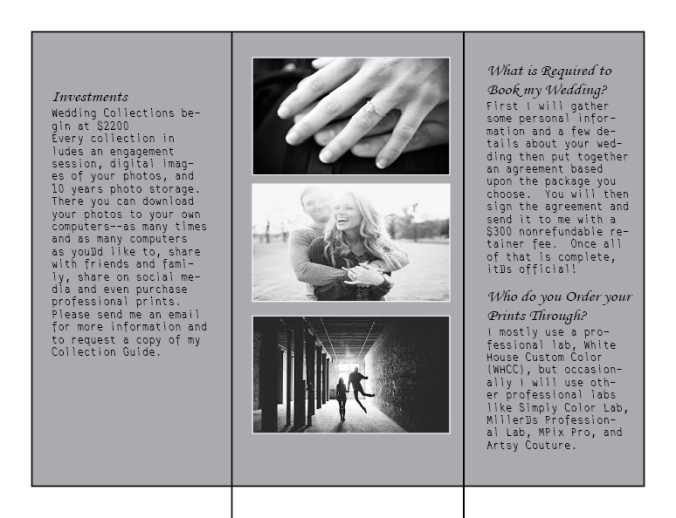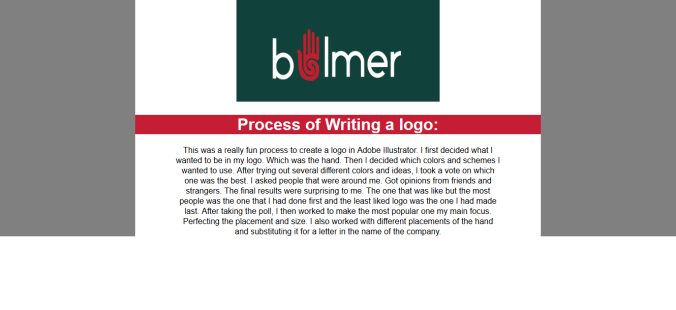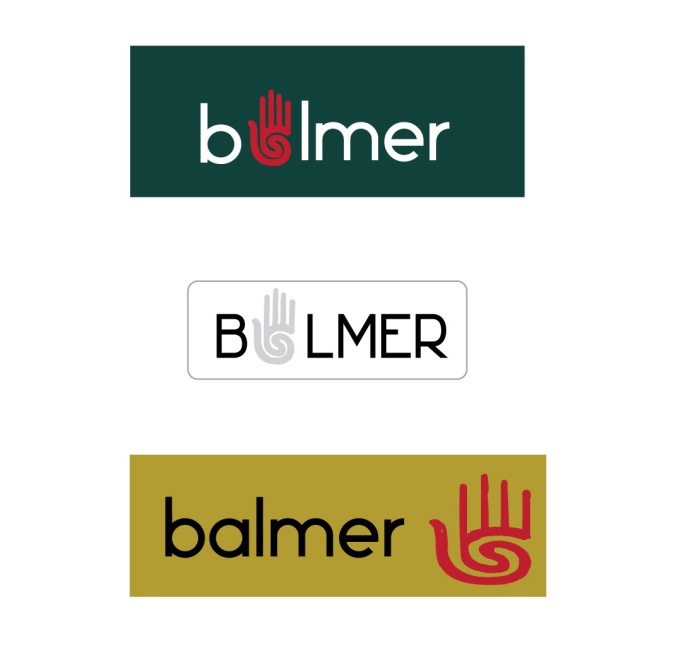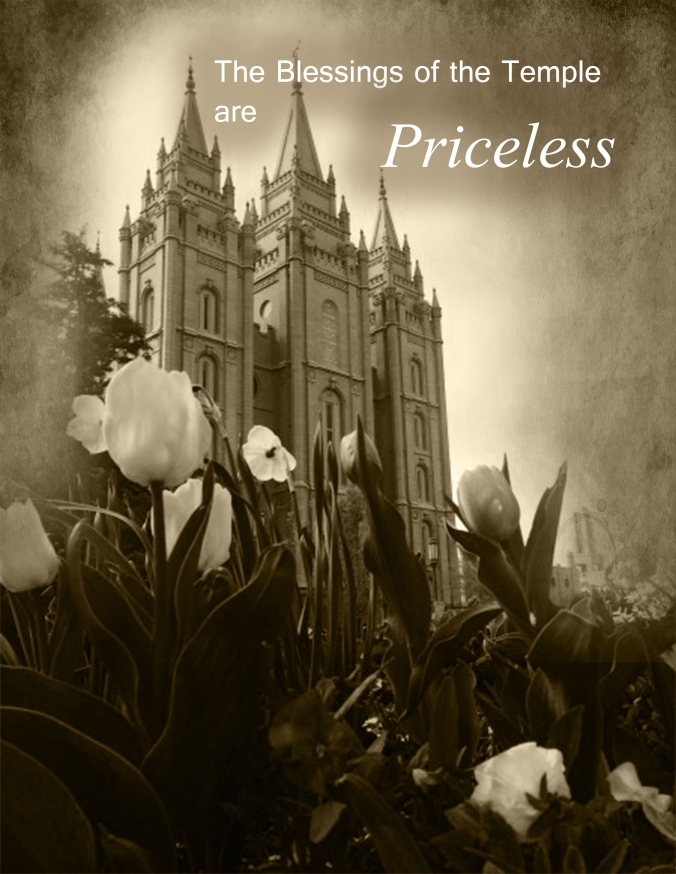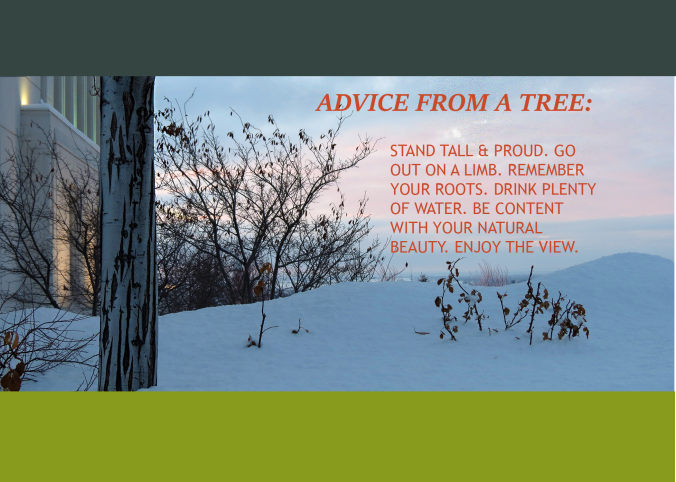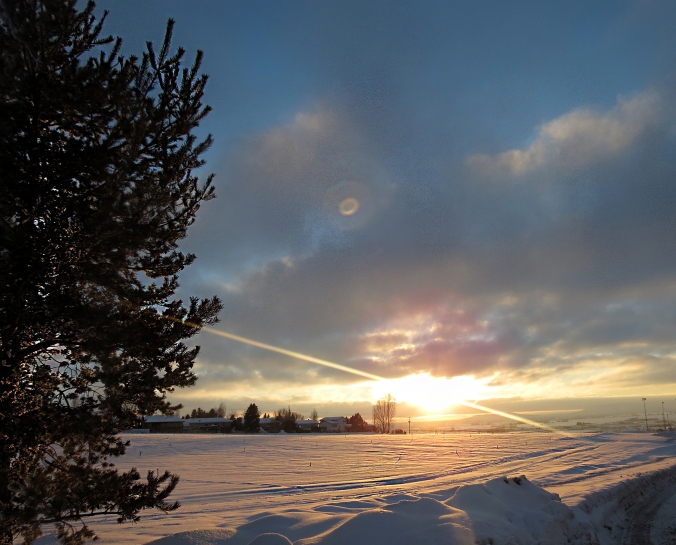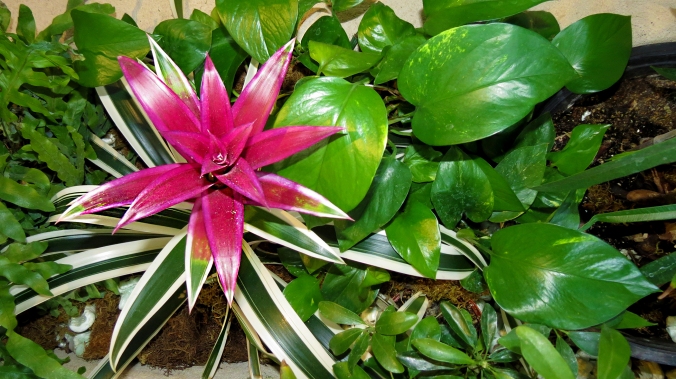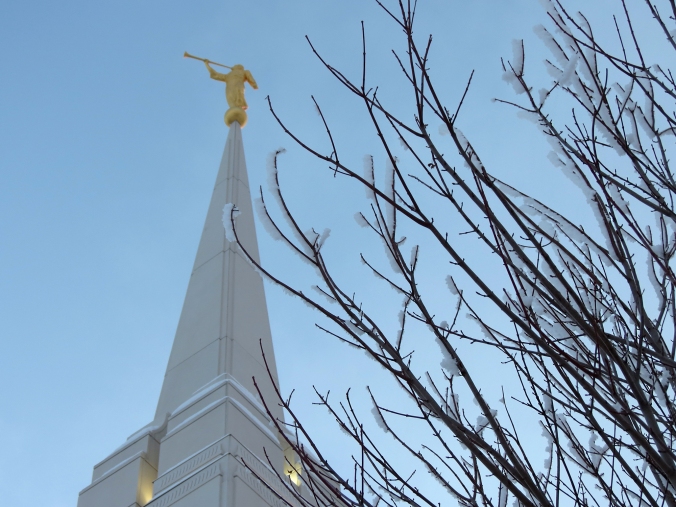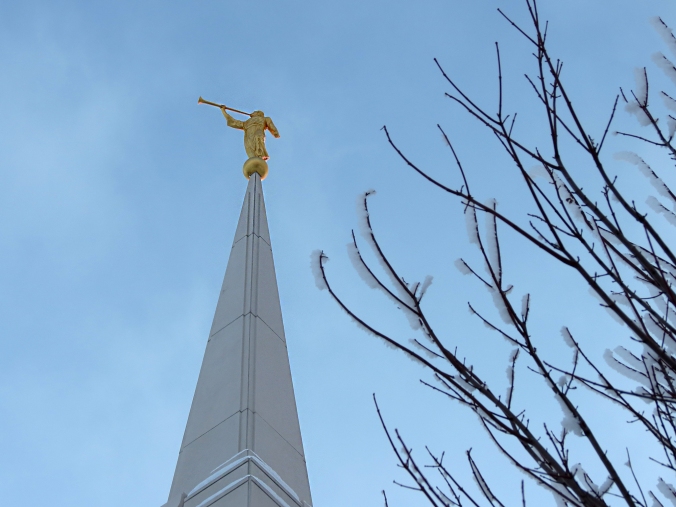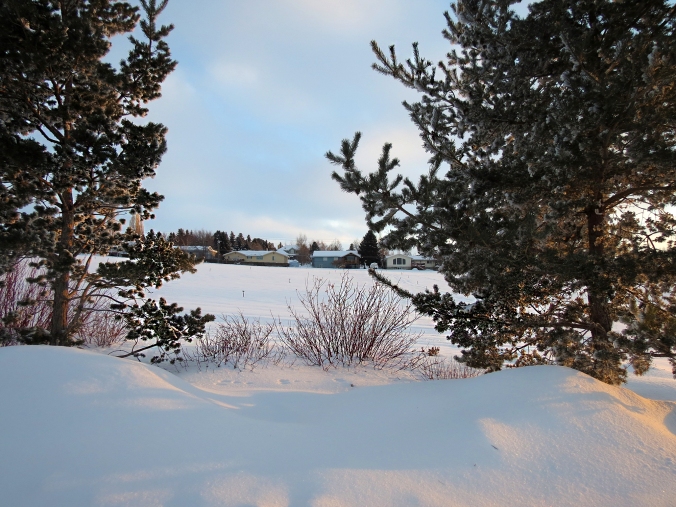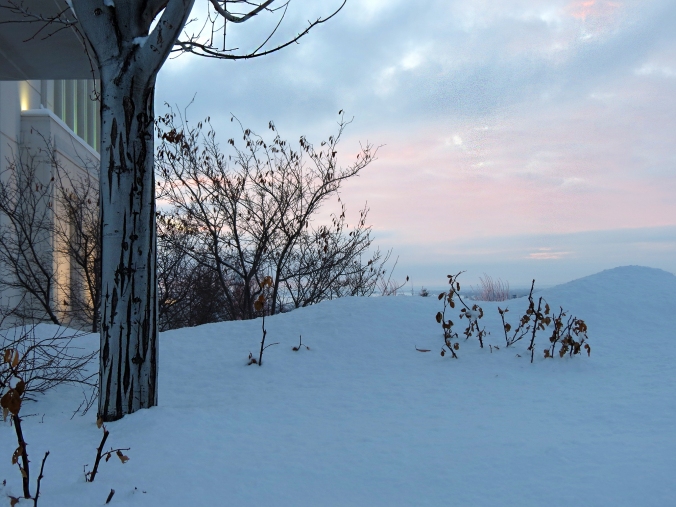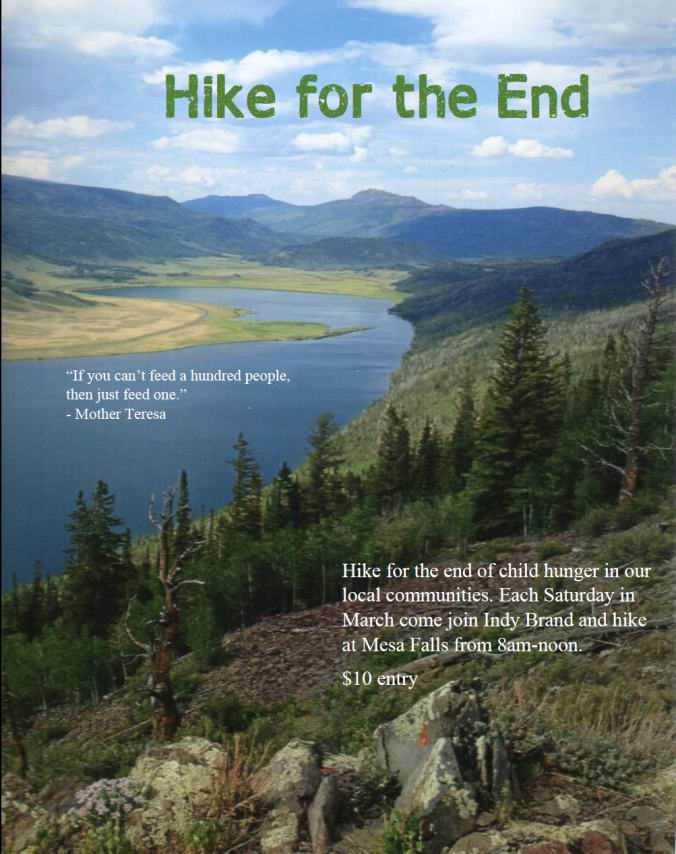The Ranch Life is Tough
REXBURG, Idaho –“If you ever got on the wrong side of the law, Jackson Hole is where you came,” Harold Turner said, the oldest of the third generation of Turners to run the Triangle X Dude Ranch in Jackson Hole, Wyoming. It used to be very hard to get to Jackson and people who did not want to be found used that to their advantage. It then became a romantic spot for visitors, not only for the beautiful scenery, but also because of the wild cowboys.
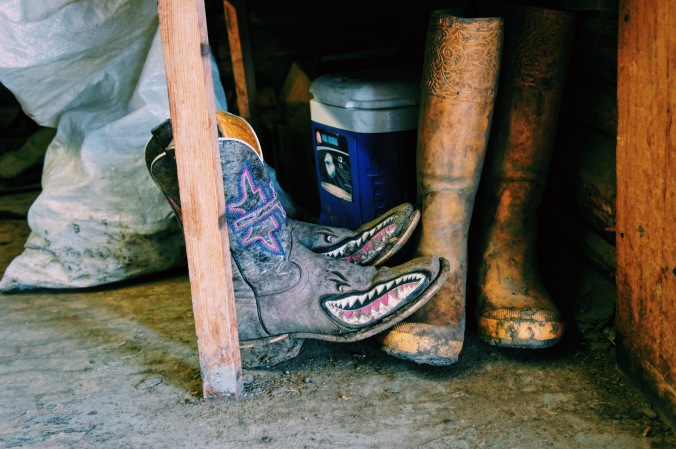
Worn cowboy boots inside the Turner barn (Photo/Nique Williams)
John S. and Maytie Turner lived and operated the Lost Creek Ranch out-side of Morgan Utah. Occasionally, during the early 1900s, they would take a fun vacation to Yellowstone National Park and a special place they loved, a relatively unknown valley called Jackson Hole.
They would stay with some homesteading friends, the Meyers, who had a small ranch to the east side of the valley with a spectacular view of the Teton Mountain Range that overlooked the Snake River.
During these early visits, the Turners’ love for Jackson Hole became stronger. One summer day, John S. Turner once again walked to the river to fish from the Meyer homestead. As he came down a small draw carpeted with aspen trees and pines, he followed a small creek out into an open area. The land sloped gently towards the river and the spectacular Teton Range. Nestled here was a small homestead owned by Bill Jump. Turner decided at that moment, at that spot, he wanted to move his family to Jackson Hole and build their home in that spot.
“I pulled my six shooter, stuck down a gopher hole, shot it, and said, ‘This is the place!’” Harold quoted his late grandfather.
John began working on the ranch with the idea that he would grow potatoes. He planted five acres of potatoes that summer. After the first frost, Turner dug up these potatoes and they were all of the size of one thumb. There was not much to them, but they were good eating.
During these early decades, there were no plowed roads in this area of the valley, so winters were long and isolated at the ranch.
“We would spend 365 days preparing for or in winter” Harold said. A trip to town usually consumed several days requiring four days of round-trip travel in a canvas covered sleigh pulled by teams of horses and heated inside with a small wood stove. Since the small
town of Jackson was a long trip on dirt roads the ranch was quite self-sufficient. Vegetables came from a large garden. During these early days, the Turners had a considerable surplus of milk which they sold to neighbors up and down this side of the valley. The milk was put into metal cans which were taken to customers by a mailman who passed the ranch each day.
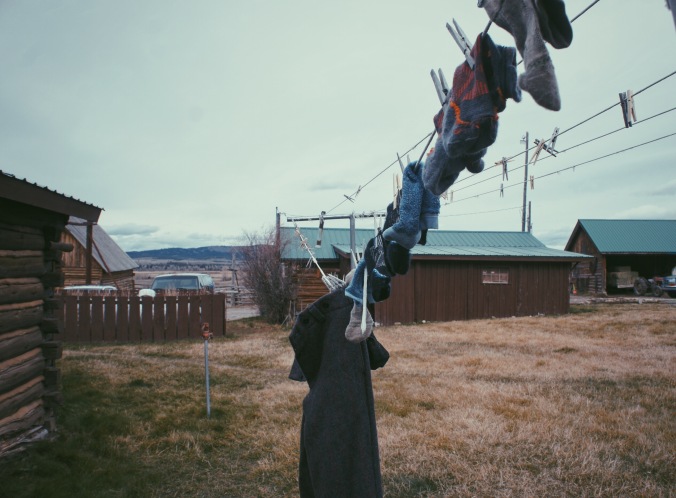
Horse Wranglers wet clothes hang to dry. (Photo/Nique Williams)
In the winter, the mail was delivered on sleighs with strong horse teams or dogs. Because there was no electricity, wood supplied heat and kerosene lamps brought light to interiors. Refrigeration was provided by large chunks of ice that had been cut from nearby beaver ponds in the winter and stored in piles of sawdust to keep through the summer. A fresh meat supply was provided by the Turners’ cattle herd, chickens, and big game which were harvested in the fall. Surprisingly, most of these methods of supply continued through the 1940s.
In the late 1920’s the ranch property was sold by the Turners to the Snake River Land Company. This company was represented to be a group of wealthy easterners who wanted to invest in the cattle and hunting business.
Later it became known that this entity was representing the Rockefeller family who wanted to secretly buy up much of the valley of Jackson Hole for preservation purposes. This revelation began more than two decades of bitter controversy, stretching the valley to Washington D.C. They tricked Turner by saying that everyone in the valley had already sold and if the Turners did not sell then they would be ultimately kicked out. Come to find out, they were the first in the valley to sell.
As his parents and siblings moved off the ranch and started other ranches around the valley, John C. Turner continued to operate the Triangle X as a working dude ranch. In 1931 he had the opportunity to guide a young lady on an elk hunt who had moved to Jackson Hole earlier with her father, a retired mining engineer, Harold T Mapes. That was the last thing her wanted to do was to take another person on an elk hunt, especially a woman. This was their first date. John C. Turner and Louise Mapes were married in 1935.
John and Louise had three sons: Harold, John, and Donald.
Good clientele used to be 15-20 guests that would stay for a few weeks.
Each family receives their own cabin and everyone receives their own horse for the week. Kids are now able to ride horses at age 5. Half the kids are capable to ride at 4, the other half were not strong enough or would fall asleep while still on the horse and fall off. Because of this, it is easier to just wait until they are 5 years old to start. Early guests came for long periods of time extending often for a month or more. Riding, fishing, square dancing, hiking and relaxing were as popular then as they are now. Most guests enjoyed helping with the ranch work such as roundups, branding cattle and cutting and putting up the hay for winter feed. Falls were as busy as summer and the Triangle X became well known for its excellent elk, moose and deer hunting.
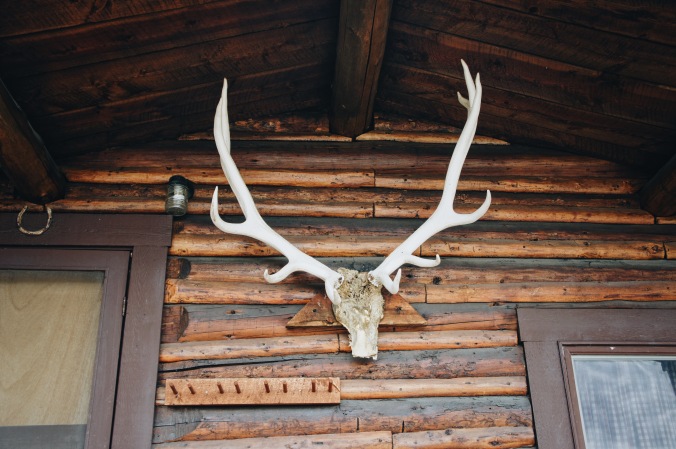
The Ranch conducts many hunting trips. This is displayed proudly outside one of the cabins (Photo/Nique Williams)
In 1950, Congress included much of the valley floor into an expanded Grand Teton National Park, including the acreage of the Triangle X Ranch. Today the Triangle X continues operation as a working dude ranch and as an authorized concession of the national park service – the last dude ranch concession within the nation’s entire national park’s system.
During WWII, hunting and fishing kept them in business. The war taught people how to travel. The war sophisticated our transportation system. It taught people that there was more in the United States besides what was in their 35 mile radius around their home. At the same time, in 1950, is when the Grand Teton Park was expanded. All of the Rockefellers land was given to the government.
In 1965 Triangle X had their Grazing Permit taken away, primarily because Lady Bird Johnson, President Lyndon Johnson’s wife, did not like to see their cows on the river. She did not think it was appropriate. Regulations came one after the other in the mid-70s. Having their cows taken away was a blessing in disguise because the money they were not spending on the cows now could be used to better the cabins and improve the ranch.
Cicily, a current employee of the ranch, has worked there for many years. Unlike most of the ranch employees, she is not a Turner and did not marry a Turner. She worked in a restaurant in Utah and had served Turner and his family. He appreciated her service so much he extended an offer to her, “Harold offered me a job right then and there.” Cicily said.
He kept the business within the family because he wanted hard working and trustworthy people. Turner knew that she would be a good addition to the crew.
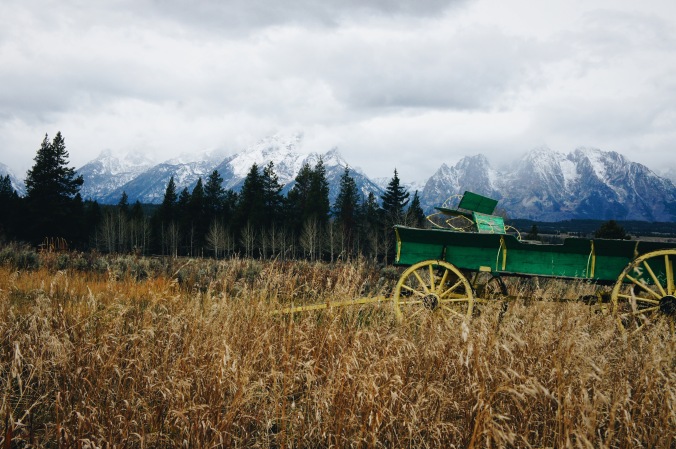
A wagon on the Turners property with the Teton Mountain Range in the background (Photo/Nique Williams)
Triangle X Ranch now caters to young families. Currently, they are full at 70-74 guests which can stay for as long as a week. There is a 75 percent return rate each year. The family participates in various activities. At meal time they sit within their age group not in their families. This allows the youth to have fun and socialize with each other. The biggest thing is what the kids get out of it. If you take care of the kids, then they will bring their parents back.
The Jefferies family recently stayed at the ranch and said, “When we left Toledo we had no idea what to expect going to a ranch and everything about our trip was incredible.

Horseshoes nailed to a cabin (Photo/Nique Williams)
We wanted to thank you so much for a trip of a lifetime that we hope to repeat in the future. We are telling all our friends to add your place to their Bucket List.” Triangle X creates a welcoming environment that is family friendly and should be shared with others. The ranch is now mostly run by one of Harold’s sons and one of his nephews.

These dogs are just a couple of the many animals that live on the ranch (Photo/Nique Williams)
“All I do now is get in their way,” he mostly works in the office now, not so much as a ranch hand anymore. The Jackson Hole Chamber has released an article about Harold’s nephew and his success as the ranch owner. 2015 will recognize John Turner, third generation ranch owner of Triangle X Ranch, former Director of US Fish and Wildlife, President of the Conservation Fund, and Assistant Secretary of State for Science, Oceans and Environment. The Murie Center will also posthumously honor the late Luke Lynch, Wyoming State Director of The Conservation Fund, with The Murie Spirit of Conservation Rising Leader Award.

Harold Turner, third generation of the Turner family (Photo/Nique Williams)
Harold Turner did not choose this lifestyle,
“I had no choice, I was born here.” A lot has changed from his childhood
“Nothing is the same except for the mountains, I still do the things I grew up doing. My hobbies are my business, I have always enjoyed it.”
